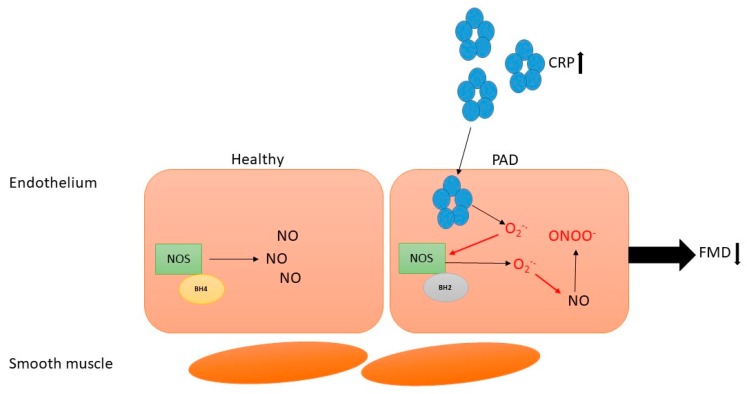Figure 1.
C-reactive protein (CRP) can promote the production of superoxide, which can lead to the destruction of tetrahydrobiopterin (BH4), uncoupling nitric oxide synthase (NOS). This can lead to increased production of superoxide, promoting oxidative stress as well as decreased production and bioavailability of nitric oxide (NO), resulting in endothelial dysfunction, which manifests clinically as reduced flow-mediated dilation (FMD). In PAD patients, CRP and FMD are inversely correlated. Notes. CRP: C-reactive protein, PAD: peripheral artery disease, O2−•: superoxide, NOS: nitric oxide synthase, BH4: tetrahydrobiopterin, BH2: dihydrobiopterin, NO: nitric oxide, ONOO-: peroxynitrite, FMD: flow-mediated dilation.

